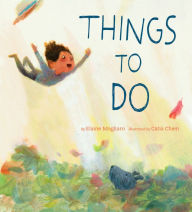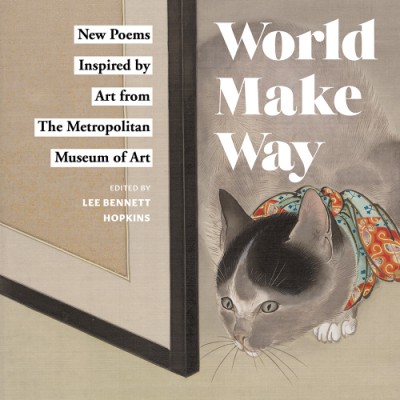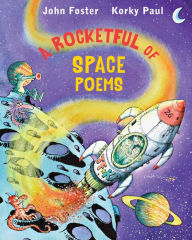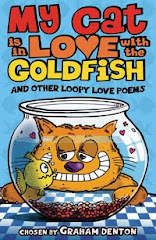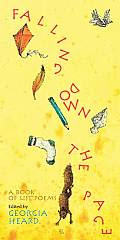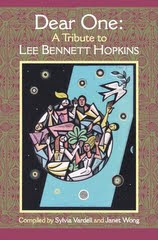When I was teaching elementary school, I liked to start the school year off with poetry. I’d make little booklets of end-of-summer and going-back-to-school poems to share with my students on the first day. My students would take the booklets home to read with their parents that night. Here are some of the poems in the “little” anthologies I compiled:
Leavetaking by Eve Merriam,
Summer’s End by Judith Viorst,
Lunchbox by Valerie Worth,
Now by Prince Redcloud,
September Is by Bobbi Katz,
September by Lucille Clifton,
Back to School by Aileen Fisher,
First Day of School by Barbara Juster Esbensen, and
The First Day of School by Aileen Fisher.
As you can see, I’ve included links to the poems I found posted on the Internet. Here are the titles of books in which the poems can be found:
Leavetaking by Eve Merriam: A SKY FULL OF POEMS by Eve Merriam and THE SKY IS FULL OF SONG selected by Lee Bennett Hopkins
Summer’s End by Judith Viorst: IF I WERE IN CHARGE OF THE WORLD AND OTHER WORRIES by Judith Viorst
Lunchbox by Valerie Worth: PEACOCK AND OTHER POEMS by Valerie Worth and SUNFLAKES: POEMS FOR CHILDREN selected by Lilian Moore
Now by Prince Redcloud: THE SKY IS FULL OF SONG selected by Lee Bennett Hopkins
September Is by Bobbi Katz: ONCE AROUND THE SUN by Bobbi Katz and SUNFLAKES: POEMS FOR CHILDREN selected by Lilian Moore
September by Lucille Clifton: EVERETT ANDERSON’S YEAR by Lucille Clifton and THE SKY IS FULL OF SONG selected by Lee Bennett Hopkins
Back to School by Aileen Fisher: OUT IN THE DARK AND DAYLIGHT by Aileen Fisher and I THOUGHT I’D TAKE MY RAT TO SCHOOL: POEMS FOR SEPTEMBER TO JUNE
First Day of School by Barbara Juster Esbensen: COLD STARS AND FIREFLIES: POEMS FOR THE FOUR SEASONS
The First Day of School by Aileen Fisher: OUT IN THE DARK AND DAYLIGHT by Aileen Fisher
Here are short reviews of two school-themed poetry books. One is a collection written by Dee Lillegard; the other is an anthology with poems by a variety of poets.

HELLO SCHOOL!: A CLASSROOM FULL OF POEMS
Written by Dee Lillegard
Illustrated by Don Carter
Alfred A. Knopf, 2001
Hello School! Contains thirty-eight short, rhyming poems about all kinds of objects found in an early elementary classroom and on a school playground—including paper, crayons, scissors, glue, an easel, a paintbrush, clay, blocks, a water fountain, swings, a slide, and letters of the alphabet (They stand in line from A to Z/longing to be wild and free/to fly away like breezy birds…/in a flock of words.)
Following is one of my favorite poems in the book:
Costume Box
by Dee Lillegard
Opens up and spills out
capes, scarves, a pig’s snout,
a clown’s nose and floppy feet,
witch’s wand and ghostly sheet,
wigs and hats of every hue…
Get ready to be someone new.
Most of the poems in this collection are no longer than three or four lines…and would be great for sharing with young children in pre-kindergarten through first grade. Don Carter’s colorful three-dimensional illustrations stand out against a white background and really do add another “dimension” to Lillegard’s brief poems. I think they are a perfect fit for the poetry in this book.
CLASSROOM CONNECTION: This would be a good book to use throughout the school year to spark the writing of collaborative poems about objects found in the classroom and on the playground. Of course, the collaborative poems wouldn’t have to rhyme. The teacher could encourage children to pretend that the objects they write about are speaking and write mask poems like Lillegard’s Glue, Puppet, Xylophone, and Wastebasket (Feed me, feed me!/Yum yum yum…/Toss your tidbits/into my tum!). The teacher could also show his/her students how to use personification as Lillegard does in many of her poems. For example, she writes about a rug that “Likes nothing more/than snoozing/on the floor…” and a paintbrush that “gets paint in his hair” and a chair that “Prefers your seat/to your feet.”
If a teacher worked with his/her students to write one poem a week, the class would have written more than thirty poems by the end of the school year. The poems could be photocopied, collated, and bound in booklets. A booklet could be given to each student to illustrate and take home as a gift for his/her parents at the end of school in June.

I THOUGHT I’D TAKE MY RAT TO SCHOOL: POEMS FOR SEPTEMBER TO JUNE
Selected by Dorothy M. Kennedy
Illustrated by Abby Carter
Little, Brown, 1993
I Thought I’d Take My Rat to School is the most comprehensive book of poetry about school that I have read. It contains fifty-seven poems by many of America’s greatest children’s poets, including David McCord, Aileen Fisher, Nikki Grimes, Arnold Adoff, X. J. Kennedy, Karla Kuskin, Myra Cohn Livingston, Eve Merriam, and Lilian Moore—all recipients of the National Council of Teachers of English Award in Excellence in Poetry for Children. There are also poems by Eleanor Farjeon, Nikki Giovanni, Ted Kooser, Jack Prelutsky, Gary Soto, Judith Viorst, Jane Yolen, and Carl Sandburg.
This anthology takes us through the school year from September to June with poems about school buses, going back to school, being the new boy at school, arithmetic and math class, recess, a science lesson, lunch, a spelling bee, art class, a school play, homework, and the first day of summer vacation. Many of the poems are rhythmic and rhyming; some are humorous; some are wistful; and some…like I don’t understand and The Schoolbus Comes Before the Sun…are more serious in tone.
From I don’t understand
by Nikki Grimes
I don’t understand
how “good” English
and five times two is ten
can help us buy more food
and extra blankets…
From The Schoolbus Comes Before the Sun
by Robert Currie
The day drags by with textbooks
lunch cold and lumpy from a pail
an afternoon of facts
the ride by the nearer farms
where kids get off and horseplay dies
Yarrow bears the rocking of the bus
the fumes the history teachers growl
knows there’s homework still to do…
And here is an excerpt from one of the funny poems in the book:
From Homework! Oh, Homework!
by Jack Prelutsky
Homework! Oh, homework!
You’re last on my list,
I simply can’t see
why you even exist,
if you just disappeared
it would tickle me pink.
Homework! Oh, homework!
I hate you! You stink!
I Thought I’d Take My Rat to School has many poems that would appeal to children in the early elementary grades. It also contains poems that are appropriate for sharing with students in the middle grades. This is definitely a poetry anthology that should be included in a school library collection.
Today's Poetry Friday Roundup is at The Book Mine Set.


 The second book collaboration between McMillan and Gunnella,
The second book collaboration between McMillan and Gunnella, 






























